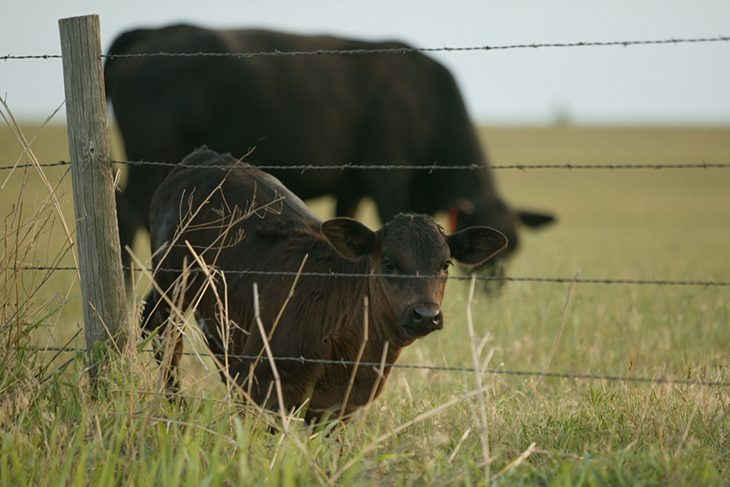
Science proves 45-day weaning period for calves adds significant value
Monday, August 27, 2018
It is weaning time for many cow-calf producers who wish to take advantage of value-added calf sales beginning in October.
“Most cow-calf producers are aware of the 45-day weaning period requirement associated with these sales, but some may wonder why the post-weaning period needs to be so lengthy,” said Glenn Selk, Oklahoma State University Cooperative Extension emeritus animal scientist and managing editor of the university’s popular Cow-Calf Corner newsletter.
Data from Iowa over a 9-year period in several feed-out tests compared the health status of calves weaned fewer than 30 days prior to being sent to a feedlot to calves weaned more than 30 days. Data from more than 2,000 calves were summarized.
“Calves that had been weaned fewer than 30 days when they had been sent to a feedlot had a higher incidence of bovine respiratory disease – 28 percent – compared to calves weaned for more than 30 days, which was 13 percent,” Selk said. “The percentage of calves that required three or more treatments also was significantly different – 6 percent versus 1 percent – in favor of calves that had been weaned more than 30 days.”
In fact, the study indicated calves weaned fewer than 30 days were no different in health attributes than calves that were weaned on the way to the feedlot. A summary of this lengthy study was published in 1999 and is available online at http://www.extension.iastate.edu/Pages/ansci/beefreports/asl-1648.pdf.
“Medical costs attributable to the treatment of BRD are substantial, and the economic impacts of BRD on carcass merit and meat quality further increase the economic costs,” said Kellie Raper, OSU Cooperative Extension agricultural economist, part of a team of OSU scientists who studied the economic effects of BRD on feedlot cattle during backgrounding and finishing phases. The OSU report is available online at http://facts.okstate.edu, listed as Extension fact sheet P-1027.
Selk stressed “Vac-45 calves” have a real advantage in terms of health compared to calves weaned for less than a month or those weaned on the way to the livestock market.
“Certainly part of the value in value-added calves can be attributed to properly applied vaccinations,” he said. “However, there is little doubt that a portion of the improved health is due to the length of time between weaning and the movement of calves to the next owner.”
A listing of the 2018-2019 Oklahoma Quality Beef Network value-added calf sales can be found on the OQBN website at http://oqbn.okstate.edu. Appropriate weaning dates and contact information for verification and sale information can be found online at the address as well.
“As weaning dates are coming up pretty quick for the October sales, producers with calves that meet those guidelines should make the appropriate contacts soon,” Selk said.
The Oklahoma Cooperative Extension Service is one of two state agencies administered by OSU’s Division of Agricultural Sciences and Natural Resources, and is a key part of the university’s state and federally mandated teaching, research and Extension land-grant mission.
